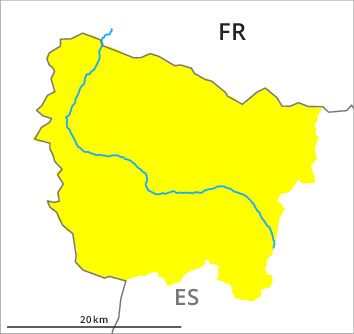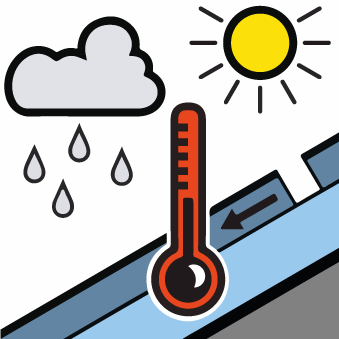
Danger level

2000m
Avalanche Problem

Wind-drifted snow

2000m


Wet snow

2000m


Wind slabs represent the main danger. Moist snow slides and avalanches are to be expected already in the early morning.
As a consequence of new snow and a moderate to strong northwesterly wind, avalanche prone wind slabs will form in the course of the day in particular on east and south facing slopes. This applies in particular adjacent to ridgelines and in gullies and bowls. Wind slabs can be released by people or triggered naturally. Mostly the avalanches are small.
The older wind slabs of the last few days will be covered with new snow and therefore barely recognisable. These can in isolated cases be triggered in the old snowpack and reach medium size in particular on steep, little used shady slopes.
As the snowfall level rises moist snow slides and avalanches are possible by the evening, but they can reach medium size in isolated cases.
The older wind slabs of the last few days will be covered with new snow and therefore barely recognisable. These can in isolated cases be triggered in the old snowpack and reach medium size in particular on steep, little used shady slopes.
As the snowfall level rises moist snow slides and avalanches are possible by the evening, but they can reach medium size in isolated cases.
Snowpack
>Over a wide area 5 to 10 cm of snow, and even more in some localities, will fall from early morning above approximately 2000 m. The northwesterly wind will transport the new snow and, in some cases, old snow as well.
In shady places that are protected from the wind: The upper section of the snowpack is soft; its surface consists of loosely bonded snow.
Wind-loaded slopes: The somewhat older wind slabs have bonded quite well with the old snowpack in particular on sunny slopes. In isolated cases wind slabs are lying on a weakly bonded old snowpack.
Towards its base, the snowpack is largely stable.
All aspects and below approximately 2000 m: The surface of the snowpack will soften quickly.
The current avalanche situation calls for defensive route selection.
In shady places that are protected from the wind: The upper section of the snowpack is soft; its surface consists of loosely bonded snow.
Wind-loaded slopes: The somewhat older wind slabs have bonded quite well with the old snowpack in particular on sunny slopes. In isolated cases wind slabs are lying on a weakly bonded old snowpack.
Towards its base, the snowpack is largely stable.
All aspects and below approximately 2000 m: The surface of the snowpack will soften quickly.
The current avalanche situation calls for defensive route selection.
Tendency
Slight decrease in danger of dry and moist avalanches as the precipitation eases.